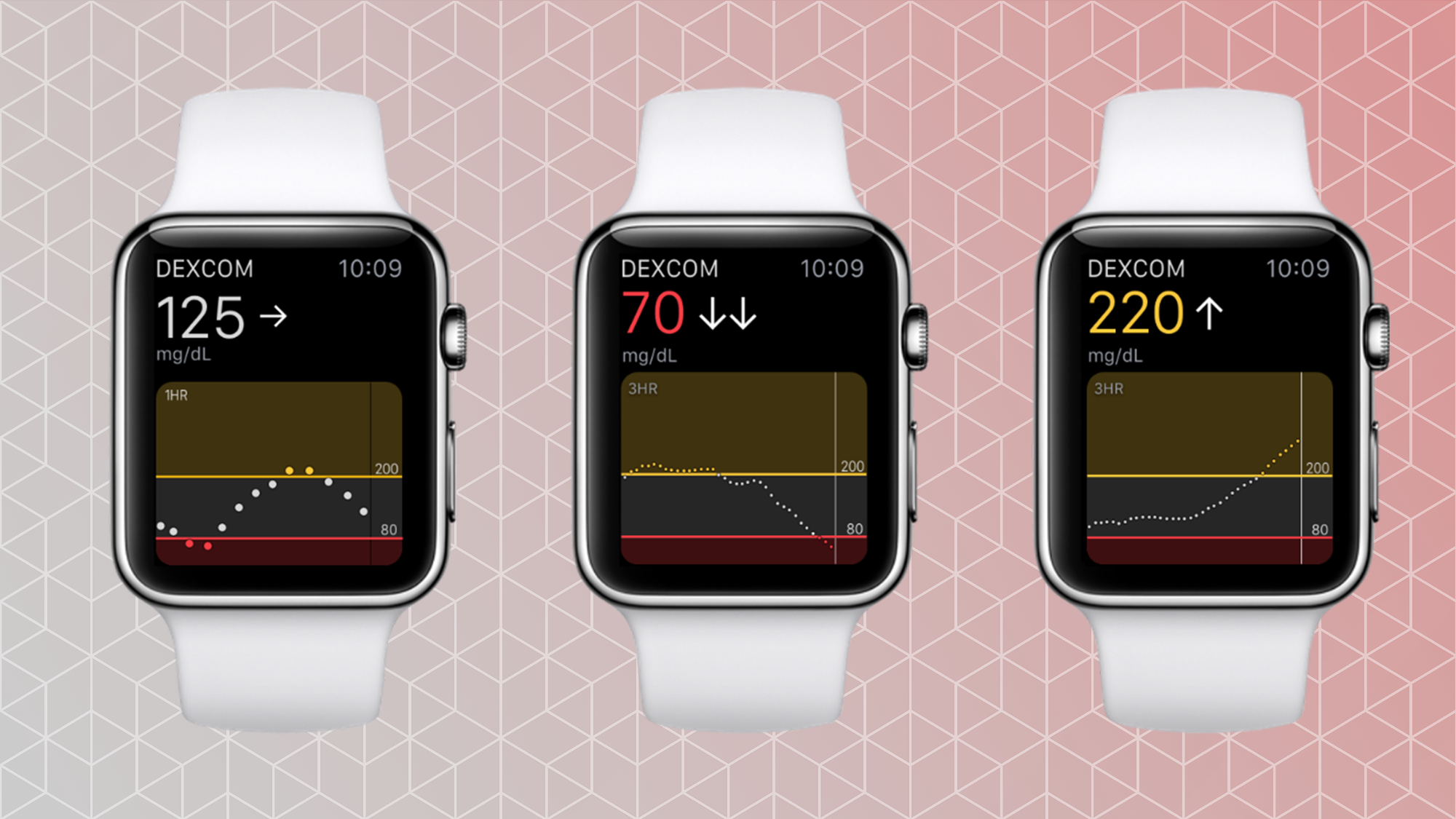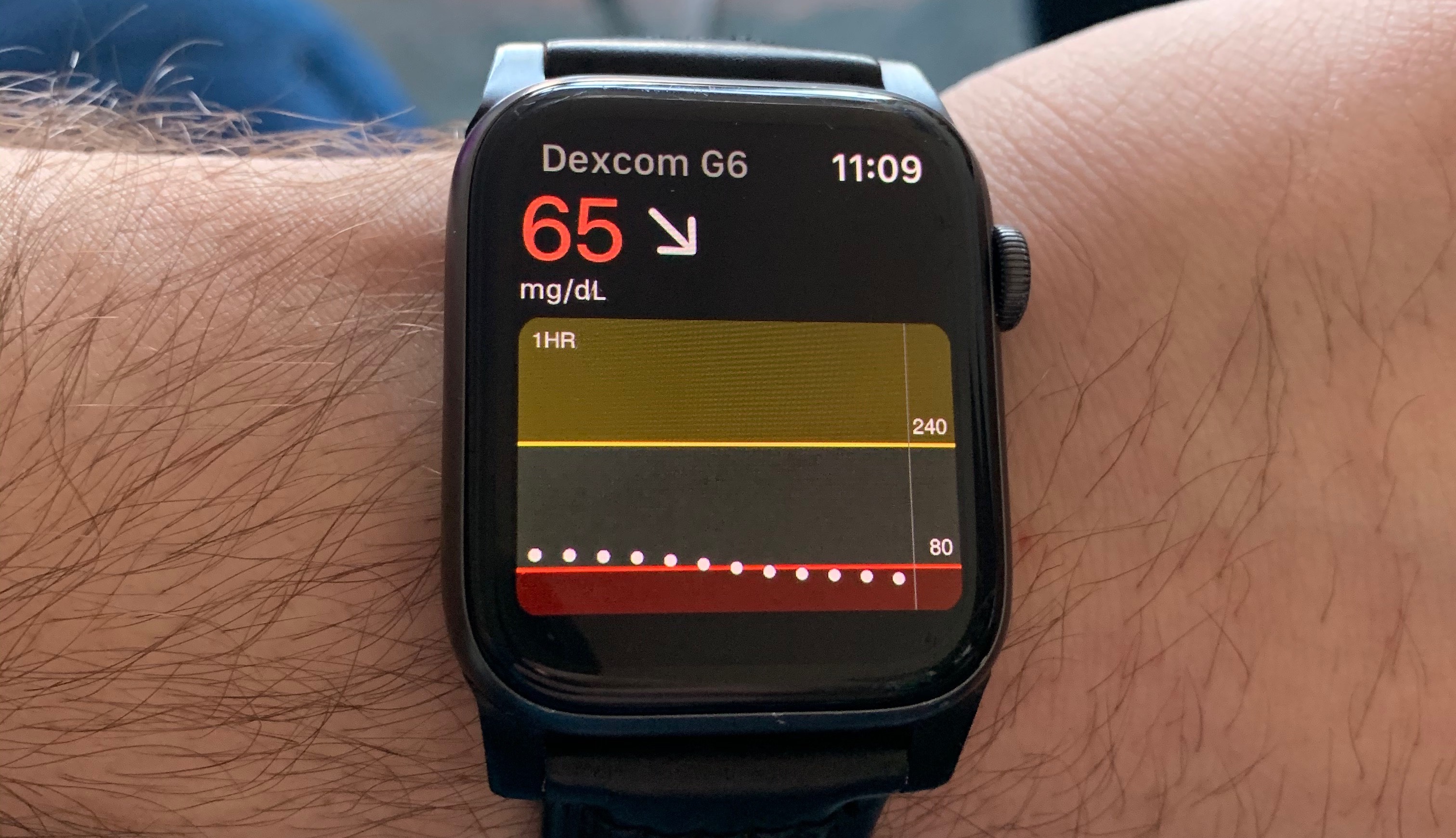Help me, Tom’s Guide: I need an Apple Watch to monitor my diabetes
When it comes to continuous glucose monitoring, owning an Apple Watch could be vital.

Gillian Lavelle spends up to 60 hours per week cultivating education for special needs children, both in school and private settings. But as a 23-year-old type 1 diabetic, cultivating stable insulin levels is a 24-7 concern.
“When it comes to controlling my glucose, I need constant monitoring to understand the foods that impact my sugar levels and to know when to correct them,” Gillian said. “I’ve been a diabetic for over 10 years, but it wasn’t until working from home during the pandemic that I realized I could watch the impact of anything I ate immediately, and how that’s the best option for me.”
The flexibility of distance learning during the earlier days of the pandemic helped Gillian acutely manage her glucose readings and trends, but the special needs teacher is back in the classroom five days a week, with off-hours home visits on three of those. She can’t monitor her blood sugar notifications on her iPhone SE as easily as she could while conducting lessons over Zoom.
Although she knows owning an Apple Watch could help, she’s not sure which model to buy. So, she turned to me—one of her best friends—and asked for advice.
How to use an Apple Watch to monitor your diabetes
On its own, an Apple Watch can’t check your glucose levels; you need to pair it with a continuous monitoring system such as Dexcom ($245 for transmitters, $1,035 for a 3-month supply of disposable sensors) or FreeStyle Libre (one-time $69.99 fee for receiver, $35.99 per 10-day sensor.)
You could also use a manual testing system such as One Drop ($30.99 - $89.99 per month, depending on how many daily tests you administer). Whichever method you prefer, having a device like an Apple Watch, which can display your glucose readings, could be vital.
“If you’re trending up or down, or heading towards a change in blood sugar, you can get your rescue before you feel the symptoms,” Emmi Petti, a nurse at Duke University Hospital and one of Gillian’s trusted resources for diabetes information, said. “This is especially helpful in situations when you don’t have immediate access to your phone like when you’re working and driving.”
Sign up to get the BEST of Tom's Guide direct to your inbox.
Get instant access to breaking news, the hottest reviews, great deals and helpful tips.
Dexcom, Gillian’s glucose-monitoring system of choice, offers a dedicated Apple Watch app (and a Samsung Galaxy Watch app and WearOS app, too) that pushes notifications from a user’s wireless insulin pump to their wrist via their smartphone. The Dexcom app also shows a user’s current glucose levels and general glucose trends at a glance. It even supports custom watch face complications for the utmost convenience.
“With type 1 diabetes, you might need to know exactly what your glucose is doing at any given point,” Dexcom CTO Jake Leach, who oversees the development of next generation glucose monitoring products, said. “The value that continuous glucose monitoring brings is your current glucose level and how it’s changing so you can make adjustments accordingly.”

Which Apple Watch should I get to monitor diabetes?
The first question Gillian brought to me is whether there’s any drawbacks to her getting the Apple Watch SE over the Apple Watch Series 6. The Series 6 is the best smartwatch we’ve tested and an impressive health tool, but it’s outside of her budget. The Series 3 doesn’t offer fall detection, which would help if irregular insulin levels caused Gillian to faint. (For a deeper dive, check out our Apple Watch 6 vs. Apple Watch SE and Apple Watch SE vs. Apple Watch 3 comparisons.)
Compared to the Apple Watch 6, the Apple Watch SE lacks an electrocardiogram reader, blood oxygen monitoring and an always-on display. In my experience with the Series 6 so far, the always-on display is the real deal-breaker for an average user, but it’s less of a sell for Gillian. In fact, she’d worry about the never-dark OLED screen on her wrist distracting her students.
Jake Green, another 23-year-old with type 1 diabetes, has owned the Apple Watch Series 4 since Dexcom’s Apple Watch app debuted two years ago. He has no plans to upgrade to one of the newest smartwatch models despite the availability of new features.
“For what I need, I’m set with the Apple Watch 4,” Green said. “It’s not like blood oxygen monitoring is important in terms of glucose monitoring. Having the Dexcom app on my wrist is what matters.”
Should I get an Apple Watch with LTE?
Gillian wondered if having an Apple Watch with LTE would mean she could get glucose readings from the pump on her body even when her iPhone is dead or out of reach.
Unfortunately, that’s not the case, as the Dexcom needs to be linked via Bluetooth to her smartphone. But, for those with diabetes or other health conditions, having an Apple Watch with LTE has other benefits. In situations where her phone dies, or worse, is stolen, she’s still connected for getting help.
For what it’s worth, LTE support on the Apple Watch SE only costs $50 more than the standard $279 entry price. Meanwhile, it costs at least $499 for an Apple Watch Series 6 with Cellular, on top of the monthly service fee.
What’s covered by insurance
Gillian is no stranger to recurring payments, but that doesn’t necessarily mean she wants more of them. Luckily, her insurance covers over $6,000 per year in costs of her Dexcom glucose sensors and transmitters, so we looked into whether BlueShield BlueCross would finance an Apple Watch, too. It won’t — instead, it has a program for financing a Fitbit as it relates to upping daily activity. Unfortunately, Dexcom does not make an app for Fitbits.
Some providers like Aetna and United do have options for Apple Watch coverage, so I would advise other diabetics in these insurance systems to seek out payment options. You should check if your glucose monitoring system has a compatible smartwatch app, too. The One Drop glucose monitoring kit is a good Dexcom alternative you could use to see your blood glucose data and analytics on your wrist.
Checking out
In addition to checking insurance and system compatibility, you should always check with your doctor before buying a device you intend to use as a health tool, diabetic or not. While the Apple Watch 6 has blood oxygen monitoring and an FDA-approved ECG sensor, the company cautions that the former is not intended for medical use.
After consulting with Petti, Gillian made her choice. “I decided to get the SE after looking into all the compatible Dexcom options,” Gillian said. “When I realized it’s such a good price for a new smartwatch, I was sold.”
“Besides,” she said, “doesn’t the name alone make the Apple Watch SE an obvious accessory for my iPhone SE?”
Kate Kozuch is the managing editor of social and video at Tom’s Guide. She writes about smartwatches, TVs, audio devices, and some cooking appliances, too. Kate appears on Fox News to talk tech trends and runs the Tom's Guide TikTok account, which you should be following if you don't already. When she’s not filming tech videos, you can find her taking up a new sport, mastering the NYT Crossword or channeling her inner celebrity chef.

